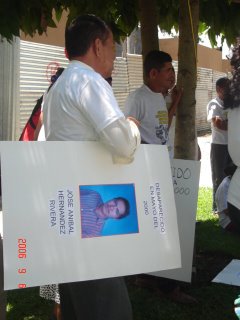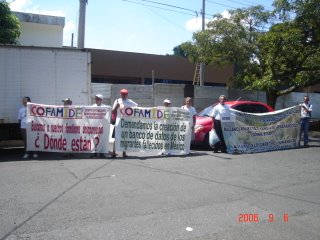Monday, September 18, 2006
La Chacra
As if poverty was not violent enough, the people of La Chacra face the terror of armed violence, rampant drug use, domestic violence and a slew of other text book cases of the ills of society.
My time in La Chacra last week was to visit the Fe y Alegria schools (a Latin American model of schools founded by the Jesuits in 1969). I have visited other Fe y Alegria schools in Guatemala, and to experience this type of community in El Salvador was a real treat. I enjoyed the time with the children which was a change from my usual day in front of a computer. And by the afternoon, we were able to sit down with the parish priest for a little lunch.
Just as we were finishing the meal blessing, repetitive shots demanded out attention. Different from the usual fireworks that go off every now and then, these shots were deliberate and distinct. As Padre Luis made the sign of the cross, praying that no one died, our group felt a certain fear knowing the shots were only about a block away.
We decided not to leave the house for the rest of the afternoon and skip the planned house visits that we were going to go on. Instead, we rested, and waited for news to arrive throughout the afternoon. As I learned, this kind of lunchtime violence is almost daily in La Chacra. On this particular day, it was a drug deal gone wrong. A man about 25 years old tried to escape down the river bank and was shot and killed. We heard the police sirens about 45 minutes after the shots and I am not sure that this particular murder made it to the media.
The truth is, rarely does all the violence in the city make it to the media. This kind of thing happens almost everyday in La Chacra and places just like it. It’s the poor who suffer the most and it is the poor who are killed. If you want to talk about the Crucified Christ, go to La Chacra.
Wednesday, September 06, 2006
Dónde Están?



There are family members of those left behind. Their loved ones tried to go to the US through Mexico to find a job and now they have dissapeared or they have died during their time of transit. In the organization I work with, CARECEN International, we help look for those individuals who have died or dissapeared, but the process is not easy.
Today was the first march of COFAMIDE (Committee of Family Members of people who have died or dissappeared or died). Today, we marched to the Mexican Embassy to demand that they help us build a database that looks for migrants who have been found in Mexico. Tomorrow we are going to the Salvadoran government to demand that they finance and maintain this database.
As 700 Salvadorans leave their country every single day to find better opportunities in the US, our work is cut out for us. With the help of COFAMIDE, we will keep looking for people, but this time there are specific stories behind every request.
Today, some members of COFAMIDE could not come to the march because it´s too difficult. It´s too difficult to talk about the poverty that drove someone they love to look for opportunities in other countries. And its too difficult to imagine that thier loved ones have died. In Solidarity they were with us today as I hope you were as well.